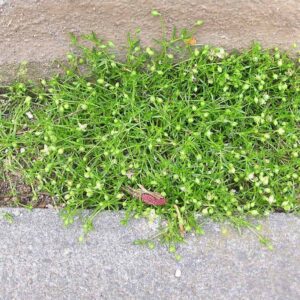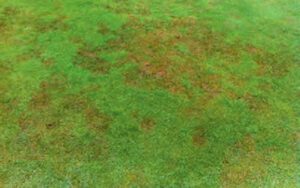Crowsfoot grass is a hardy annual weed that thrives in various soil conditions and climates. It’s ability to seed, even in closely mown areas, and its rapid growth make it a particularly challenging pest for Sydney lawns. Use these tips from All Year Round Turf to learn how to recognise Crowsfoot grass, as well as strategies to prevent it from taking over your backyard.
How to Recognize Crowsfoot Grass
Crowsfoot grass, scientifically known as Eleusine indica, is most prolific during spring, summer, and autumn. The tufted, short-lived grass features semi-upright stems that can grow up to 60 cm tall.
It is a highly adaptable plant, capable of surviving in heavily compacted areas where Couch grass might struggle to grow. Crowsfoot grass can survive for up to 12 months in frost-free conditions.
The prominently keeled leaf sheath can grow 5 cm to 10 cm long at the base of the leaf blade. Mostly hairless, narrow leaf blades can grow to between 3 cm and 35 cm in length.
The pesky weed can produce between 1 to 15 seed head branches that radiate outwards from a single point. These branches measure between 3.5 cm and 15.5 cm in length. Numerous flower spikelets, 35 cm to 70 cm long, are densely arranged along the seedhead branches.
Part of the challenge when dealing with Crowsfoot grass is that the low-growing weed can seed even when closely mown.
Chemical Control of Crowsfoot Grass
Sydney homeowners can control Crowsfoot grass with a pre-emergent herbicide containing the active ingredient Oxadiazon. This herbicide works by inhibiting the germination of the weed seeds, which effectively prevents the grass from establishing a foothold in treated areas. The best results are achieved by applying Oxadiazon before the weed emerges.
A combination of fertilisers and pre-emergent herbicides can also help control the resilient pest. This approach controls the growth of Crowsfoot grass and creates healthier lawns that can resist the weed.
Avoid over-fertilization. While fertilizers can help prevent Crowsfoot grass from taking over, it’s important not to over-fertilize your lawn. Over-fertilization can lead to an excess of nutrients that can encourage the growth of weeds, including Crowsfoot grass.
Controlling Crowsfoot Grass Manually
While pre-emergent herbicides are effective, they might not always be practical for small lawns or gardens. In these cases, manually removing Crowsfoot is an option. You will need to dig deep to ensure you remove the entire root system to prevent regrowth.
The hardy weed prefers to grow in patches of longer grass, so regular mowing is a good way to prevent it from establishing itself. Crowsfoot grass thrives in compacted soil, so aerating your lawn can help prevent it from taking root.

How to Control Pearlwort in Your Lawn
Pearlwort (Sagina procumbens) is a widespread weed found in lawns along Australia’s eastern seaboard. It affects both warm- and cool-season grasses and behaves similarly to



